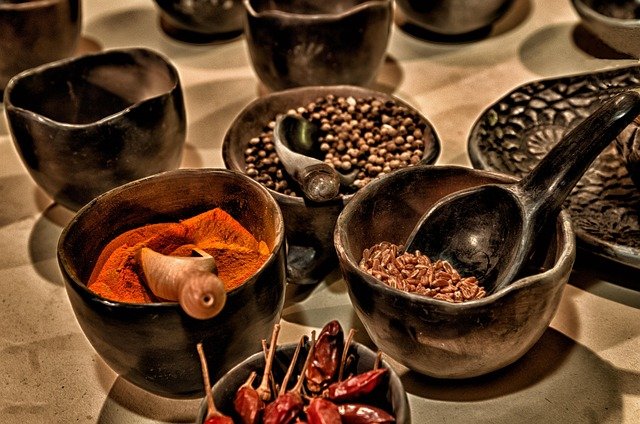Spice Blending: The Art of Creating Signature Flavor Profiles
Dive into the aromatic world of spice blending, where culinary creativity meets tradition. This ancient practice has evolved into a modern art form, allowing chefs and home cooks alike to craft unique flavor profiles that elevate dishes to new heights. From vibrant curry powders to zesty barbecue rubs, the possibilities are endless when you master the art of spice blending.

The Alchemy of Aroma
Spice blending is more than just mixing random ingredients; it’s a delicate balance of flavors, aromas, and textures. Understanding the characteristics of individual spices is crucial to creating harmonious blends. Consider the warmth of cinnamon, the pungency of cumin, and the earthiness of turmeric. Each spice brings its own personality to the mix, and learning how to combine them effectively is key to developing your signature blends.
Building Your Spice Pantry
Before embarking on your spice blending journey, it’s essential to stock your pantry with a diverse array of spices. Start with the basics: black pepper, coriander, cumin, paprika, and cinnamon. Then, expand your collection with more exotic options like sumac, za’atar, and grains of paradise. Don’t forget whole spices, which offer fresher flavors and longer shelf life. Invest in a good quality spice grinder to unleash the full potential of whole spices on demand.
The Science of Flavor Pairing
Creating successful spice blends isn’t just about throwing together what sounds good. There’s a science to flavor pairing that can guide your experimentation. Complementary flavors, like the classic combination of cinnamon and nutmeg, work well together because they share similar flavor compounds. Contrasting flavors, such as the heat of chili balanced with the sweetness of paprika, create depth and complexity. Understanding these principles will help you craft more sophisticated and well-rounded blends.
Regional Inspirations
Drawing inspiration from global cuisines can expand your spice blending horizons. Explore the warm, earthy blends of North African ras el hanout, the fiery complexity of Indian garam masala, or the aromatic allure of Chinese five-spice powder. Each regional blend tells a story of culture, geography, and culinary tradition. By studying these time-honored combinations, you can gain insights into flavor balancing and create your own fusion blends that pay homage to diverse culinary heritages.
Customizing for Dietary Needs
In today’s health-conscious world, spice blends offer a fantastic way to boost flavor without adding calories, salt, or sugar. Create low-sodium blends by focusing on bold, aromatic spices like smoked paprika, garlic powder, and dried herbs. For those following anti-inflammatory diets, incorporate turmeric, ginger, and black pepper into your mixes. Experiment with salt-free herb blends that can transform simple dishes into gourmet meals, catering to various dietary restrictions while still delivering maximum flavor.
Spice Blending Tips & Facts
• Toast whole spices before grinding to intensify their flavors
• Store spice blends in airtight containers away from heat and light
• Grind spices in small batches to maintain freshness
• Some spices, like turmeric, have natural preservative properties
• The world’s most expensive spice, saffron, can cost up to $11,000 per kilogram
• The ancient Egyptians used spices in the mummification process
• Nutmeg is mildly hallucinogenic in large doses
In conclusion, spice blending is a gateway to culinary creativity and cultural exploration. By mastering this art, you can transform everyday ingredients into extraordinary meals, tailored to your taste preferences and dietary needs. Whether you’re recreating traditional blends or inventing new flavor combinations, the world of spices offers endless possibilities for gastronomic adventure. So, grab your mortar and pestle, and start your journey into the fragrant realm of spice blending – your taste buds will thank you.





